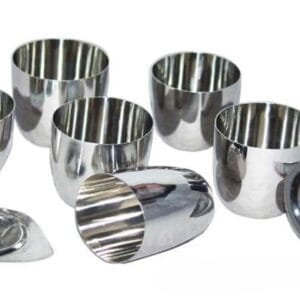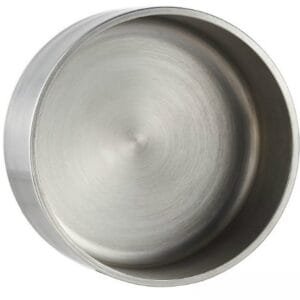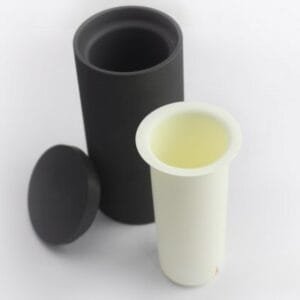Rhenium Crucible
Introduction
Rhenium Crucibles are high-performance refractory containers engineered for applications demanding extreme thermal stability, corrosion resistance, and chemical inertness. With one of the highest melting points among all metals (3180 °C), rhenium is an ideal choice for handling aggressive melts, high-purity growth processes, and advanced material research. Its unique properties make rhenium crucibles indispensable in single-crystal growth, semiconductor research, aerospace, and high-temperature chemistry.
Detailed Description
Manufactured from high-purity rhenium (≥99.9%), these crucibles are fabricated by precision machining, powder metallurgy, or hot-pressing techniques to achieve excellent density and surface finish. Rhenium crucibles are available in standard geometries (cylindrical, conical, boat-shaped) as well as customized designs to meet specific experimental and industrial needs.
Key features include:
Ultra-High Melting Point (3180 °C) – ideal for ultra-high-temperature applications.
High Density (21.02 g/cm³) – provides stability against deformation under extreme conditions.
Corrosion Resistance – withstands aggressive molten metals, salts, and oxides.
Low Vapor Pressure – ensures minimal contamination in high vacuum or inert atmospheres.
Custom Fabrication – tailored to specific shapes, wall thicknesses, and dimensions.
Applications
Rhenium crucibles are commonly used in:
Single Crystal Growth – for semiconductors, oxides, and advanced functional materials.
High-Temperature Metallurgy – melting and refining rare or reactive metals.
Aerospace R&D – high-temperature materials testing and alloy development.
Semiconductor Industry – crucibles for epitaxial growth and high-purity processing.
Material Science Research – handling aggressive chemicals and studying refractory systems.
Technical Parameters
| Parameter | Typical Value / Range | Importance |
|---|---|---|
| Purity | 99.9% – 99.99% | Ensures minimal contamination |
| Melting Point | 3180 °C | Suitable for ultra-high-temperature use |
| Density | 21.02 g/cm³ | Provides dimensional stability |
| Wall Thickness | 0.5 – 5 mm (customizable) | Balances thermal strength and capacity |
| Dimensions | Ø10 – 200 mm (customizable) | Fits diverse experimental setups |
| Form | Cylindrical, conical, boat, custom | Meets specific application needs |
Comparison with Related Materials
| Material | Key Advantage | Typical Application |
|---|---|---|
| Rhenium Crucible | Extreme high-temp resistance, inertness | Single crystal growth, semiconductor R&D |
| Tungsten Crucible | Cost-effective, strong at high temp | General metallurgy, vacuum furnaces |
| Molybdenum Crucible | Lightweight, good thermal stability | Glass melting, evaporation processes |
FAQ
| Question | Answer |
|---|---|
| What is the maximum temperature Rhenium crucibles can handle? | Up to ~3000 °C in vacuum or inert atmospheres. |
| Can Rhenium crucibles be reused? | Yes, with proper handling they offer long service life under high-temperature cycling. |
| Are custom designs available? | Yes, we provide tailored geometries based on drawings or requirements. |
| Which industries use Rhenium crucibles most? | Semiconductor, aerospace, materials research, and metallurgy. |
| How are crucibles packaged? | Each crucible is vacuum-packed, cushioned with foam, and shipped in export-grade cartons or wooden crates. |
Packaging
Each Rhenium Crucible is cleaned, vacuum-sealed, and carefully packaged with foam or protective inserts. Export-safe cartons or wooden crates are used to guarantee safe delivery and long-term storage without damage or contamination.
Conclusion
Rhenium Crucibles represent the pinnacle of refractory metal processing equipment, delivering unmatched high-temperature stability and corrosion resistance. With customizable designs, ultra-high purity, and reliable performance, they are essential tools for advanced crystal growth, metallurgy, and semiconductor research.
For detailed specifications and a quotation, please contact us at [sales@thinfilmmaterials.com].





Reviews
There are no reviews yet.